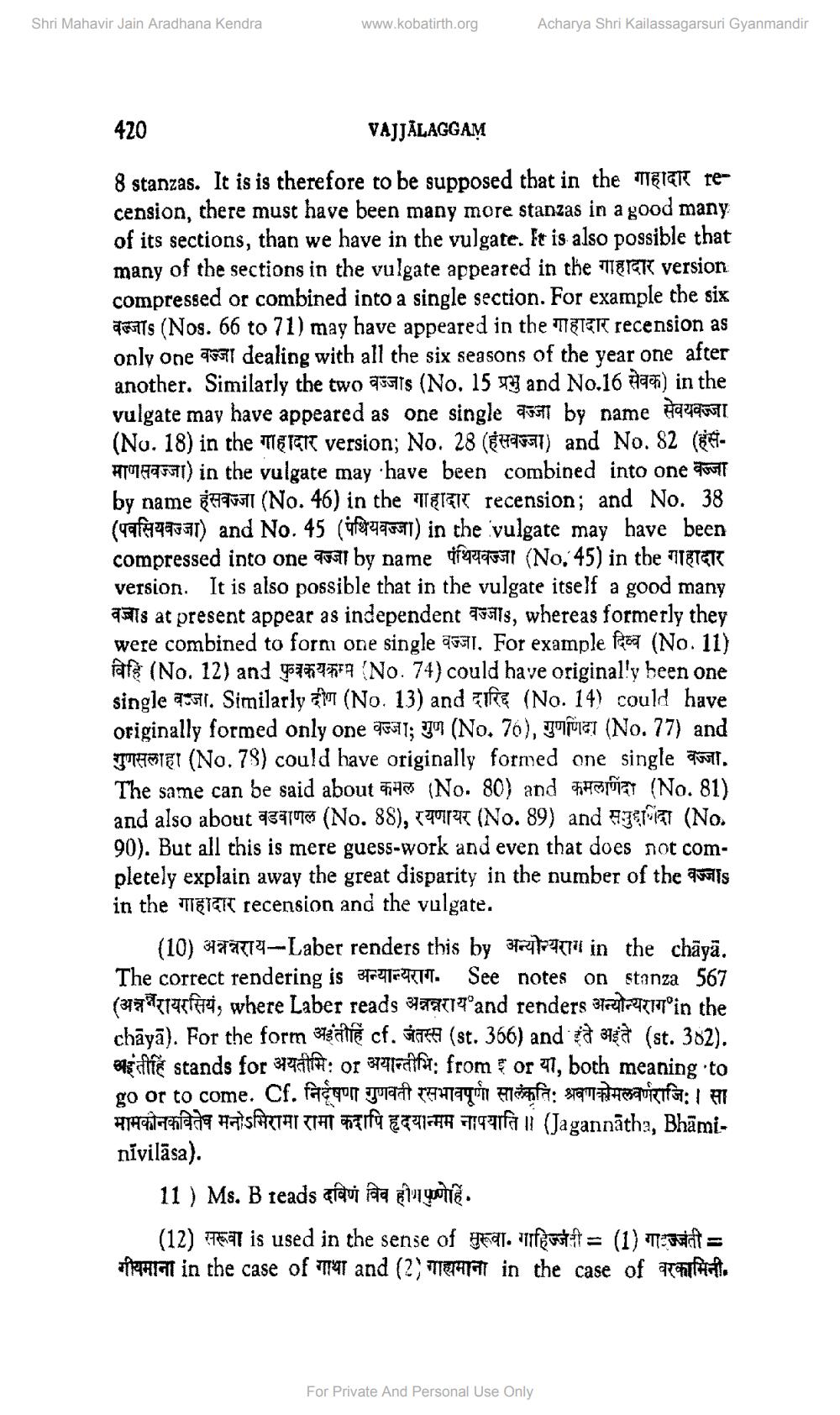________________
Shri Mahavir Jain Aradhana Kendra
www.kobatirth.org
Acharya Shri Kailassagarsuri Gyanmandir
420
VAJJĀLAGGAM 8 stanzas. It is is therefore to be supposed that in the main re cension, there must have been many more stanzas in a good many of its sections, than we have in the vulgate. It is also possible that many of the sections in the vulgate appeared in the mari version compressed or combined into a single section. For example the six
STS (Nos. 66 to 71) may have appeared in the TETER recension as only one 1991 dealing with all the six seasons of the year one after another. Similarly the two 45918 (No. 1577 and No.16 292) in the vulgate may have appeared as one single 45571 by name #duq71 (No. 18) in the TIETER version; No. 28 (€49597) and No. 82 (AF
17895371) in the vulgate may have been combined into one point by name 696 (No. 46) in the Terzit recension; and No. 38 (42f949591) and No. 45 (ifereqol) in the vulgate may have been compressed into one 18971 by name 79475971 (No. 45) in the 718T&T version. It is also possible that in the vulgate itself a good many 75118 at present appear as independent 775118, whereas formerly they were combined to form one single 1951. For example force (No. 11) als (No. 12) and 4*4** (No. 74) could have originally been one single 251. Similarly aim (No. 13) and Fire (No. 14) could have originally formed only one TEHT; 7 (No. 76), Yuva (No. 77) and TTHONET (No. 78) could have originally formed one single wil. The same can be said about 5* (No. 80) and #ca (No. 81) and also about वडवाणल (No. 88), रयणायर (No. 89) and सगुद्दशिंदा (No. 90). But all this is mere guess-work and even that does not completely explain away the great disparity in the number of the is in the TIETCT recension and the vulgate.
(10) Tatry--Laber renders this by year in the chāyā. The correct rendering is 82177CM. See notes on stanza 567 (अन्ननरायरसियं, where Laber reads अन्नन्नराय and renders अन्योन्यराग in the chāyā). For the form gatit cf. f (st. 366) and a 37a (st. 382). अहंतीहि stands for अयतीमि: or अयान्तीभि: from , or या, both meaning to go or to come. Cf. faguir guant tantaquir entra: samaa SPORTS: 1 FI मामकोनकवितेष मनोऽमिरामा रामा कदापि हृदयान्मम नापयाति ॥ (Jagannatha, Bhaminīvilāsa).
11 ) Ms. B reads graui fata in mo.
(12) 1877 is used in the sense of yell. rfeustit = (1) = गीयमाना in the case of गाथा and (2) गाह्यमाना in the case of वरकामिनी.
For Private And Personal Use Only




